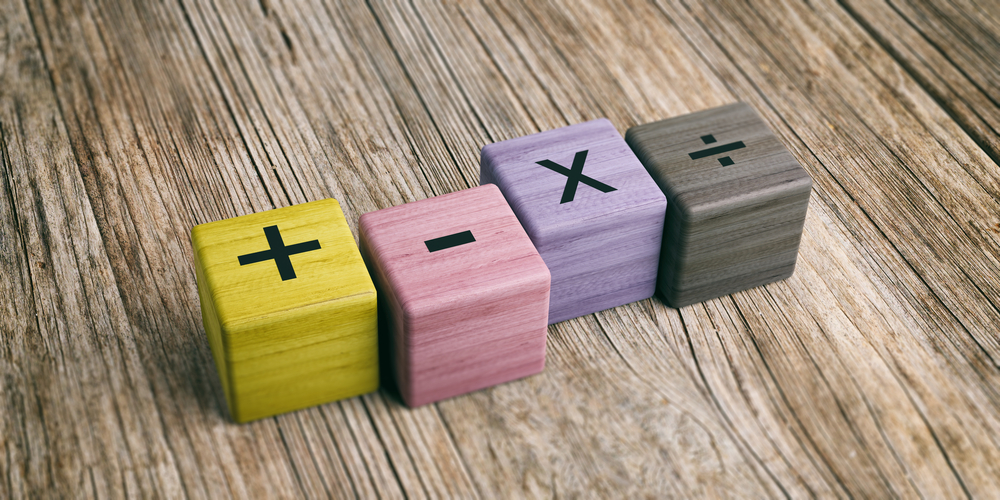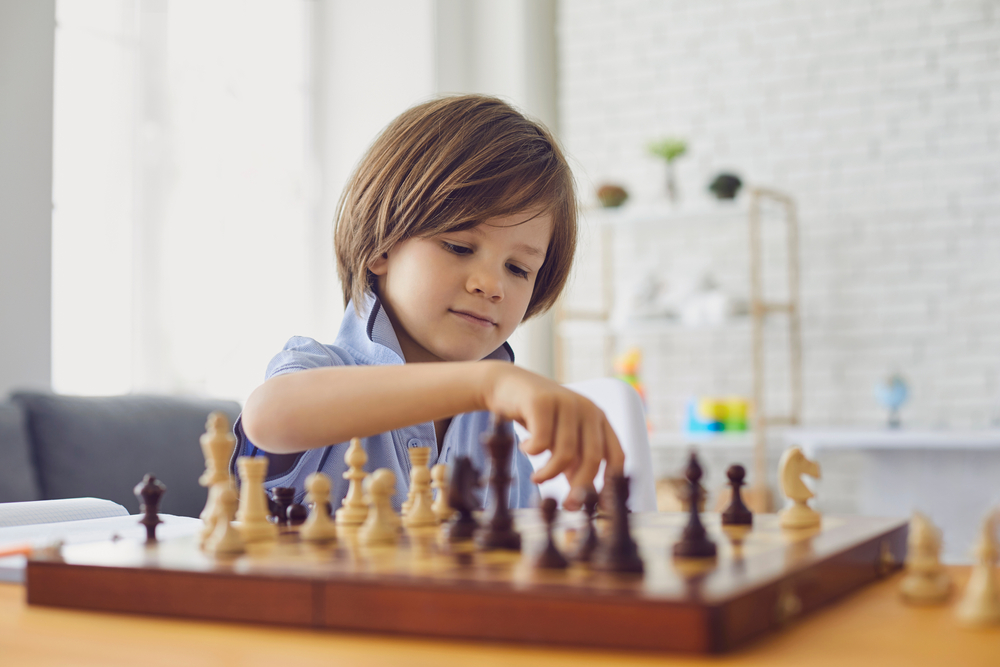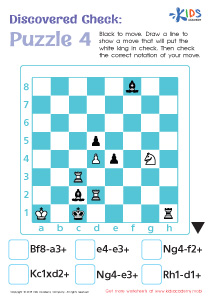Chess Worksheets for Ages 3-7
97 filtered results
-
From - To
Explore our engaging Chess Worksheets designed specifically for children ages 3-7! These fun and interactive printables introduce young learners to the exciting world of chess, enhancing their strategic thinking and problem-solving skills. With a range of activities including puzzles, coloring pages, and step-by-step guides, children will develop an early appreciation for this classic game. Each worksheet aligns with educational standards, promoting cognitive development and creativity. Whether you’re a parent or a teacher, these worksheets are perfect for enhancing classroom lessons or home learning. Dive into the world of chess and watch your child's imagination and intellect flourish!
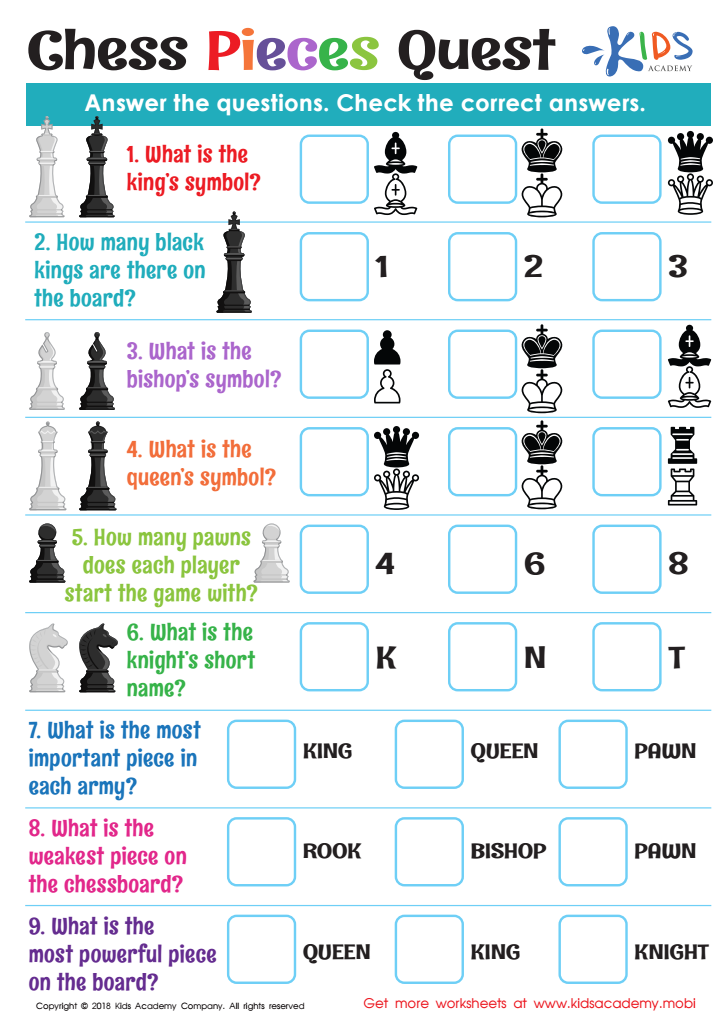

Chess Pieces Quest Worksheet


Notation of Moves Writing it Down Worksheet
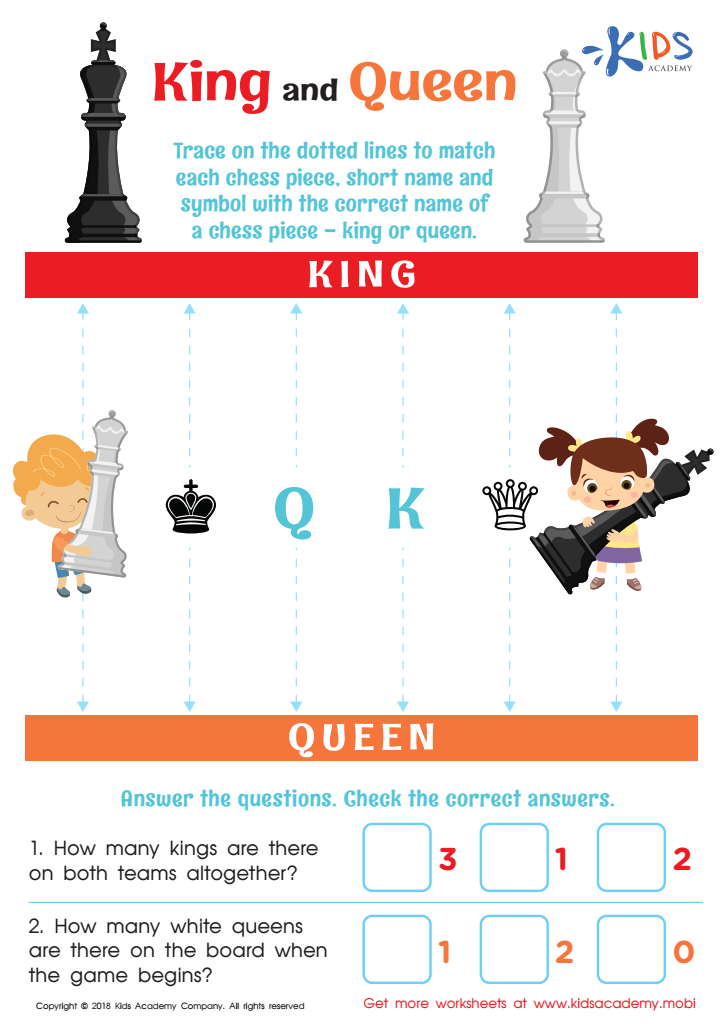

King and Queen Worksheet
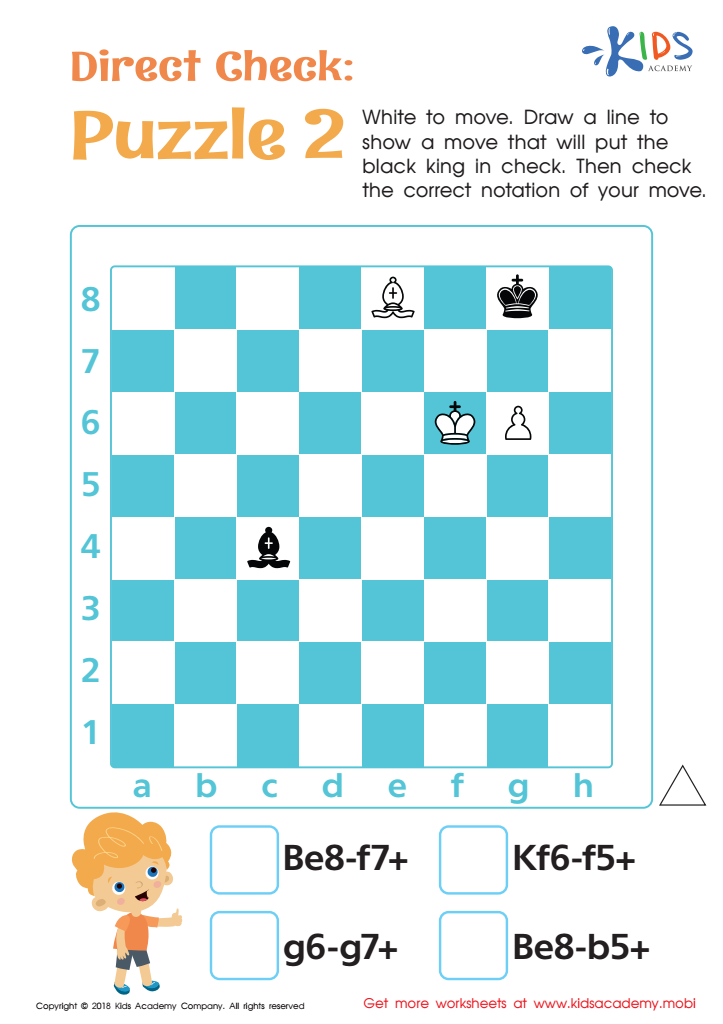

Direct Check: Puzzle 2 Worksheet
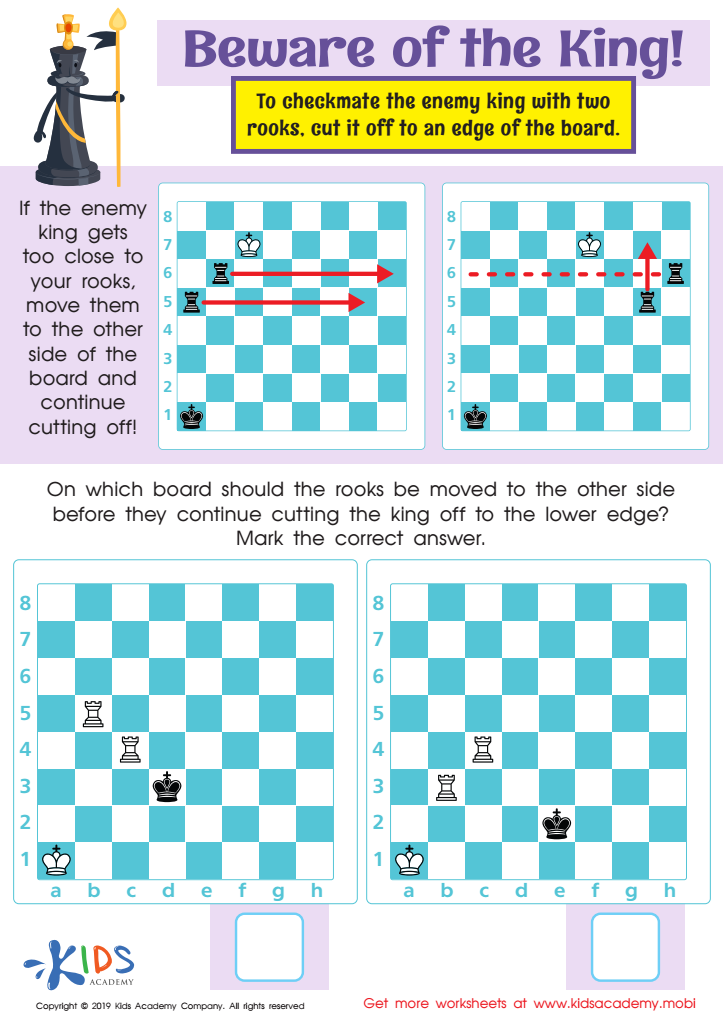

Beware of the King! Worksheet
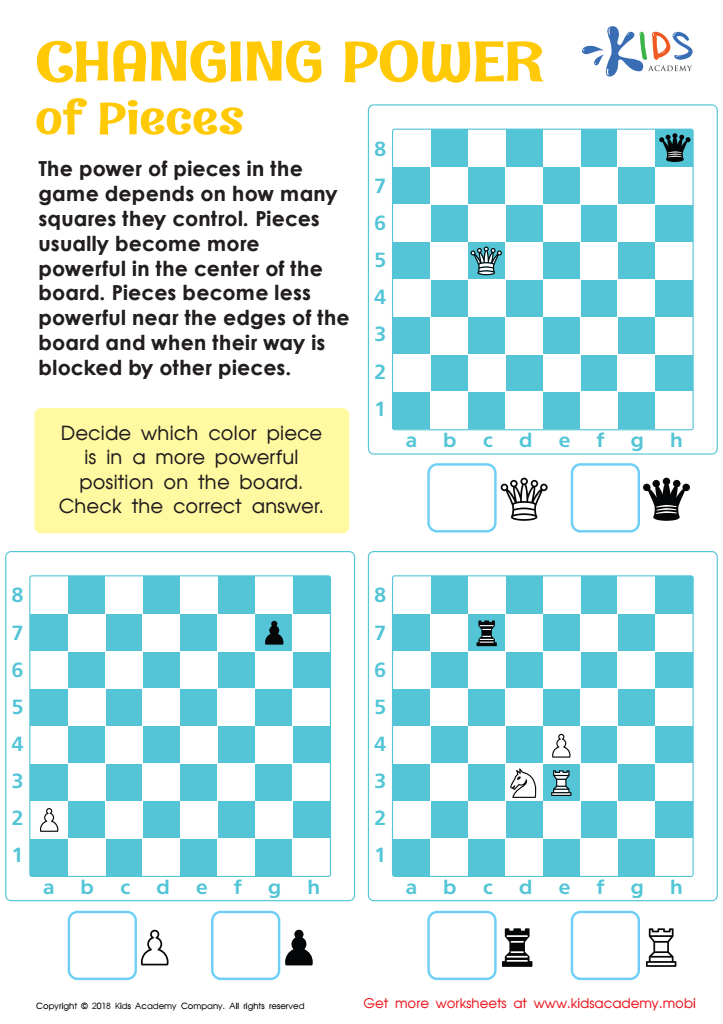

Changing Power of Chess Pieces Worksheet
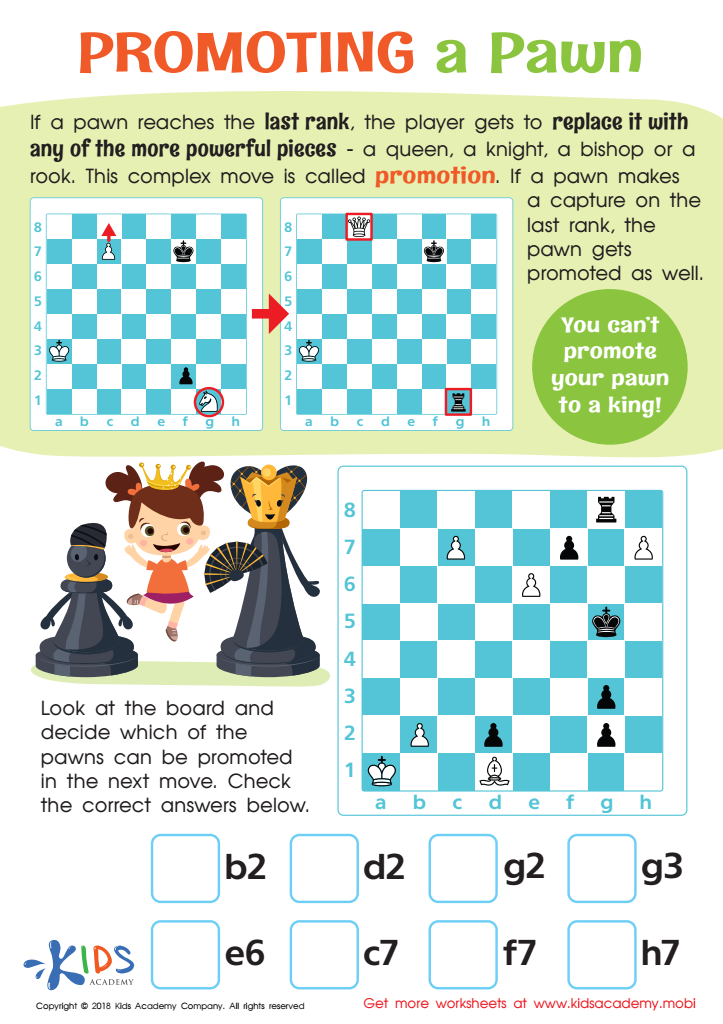

Promoting a Pawn Worksheet
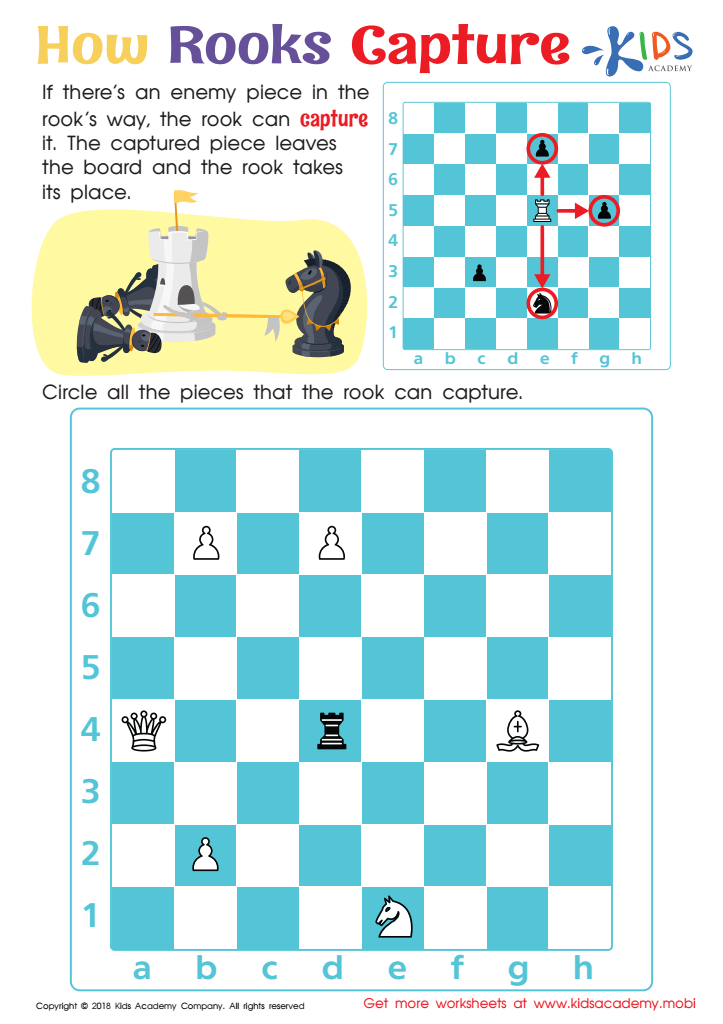

How Rooks Capture Worksheet
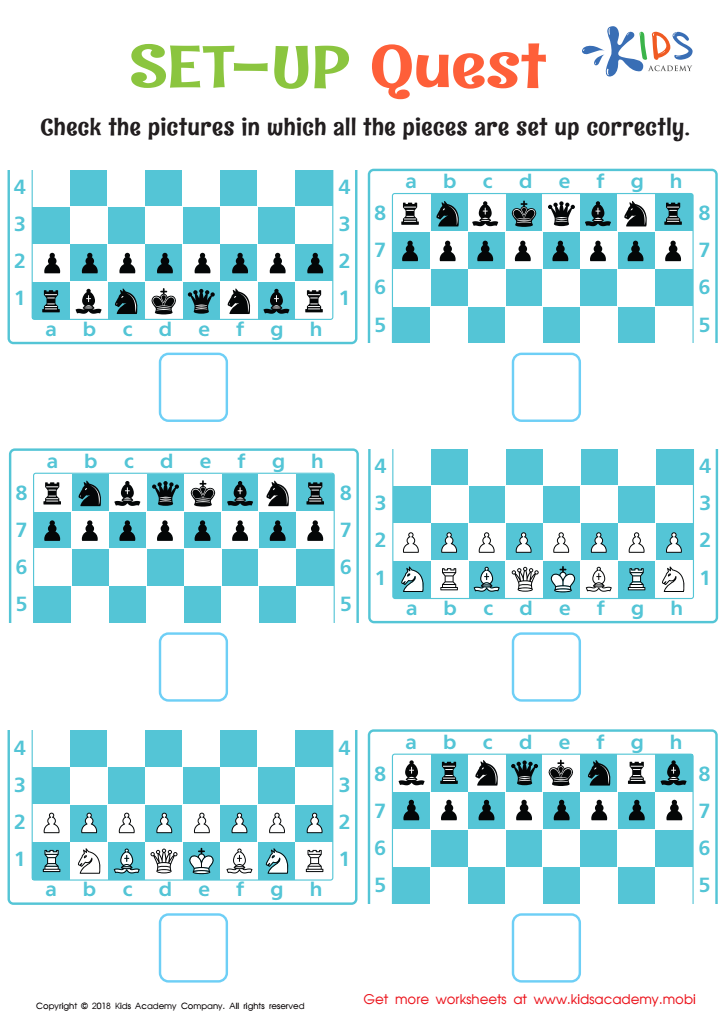

Set-up Quest Worksheet
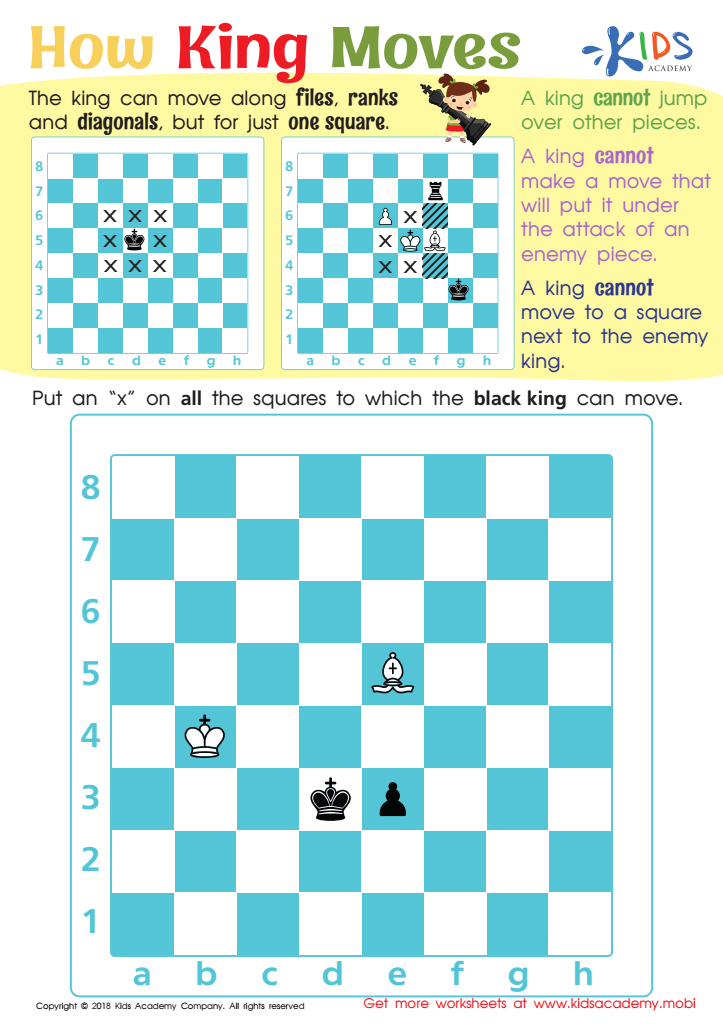

How King Moves Worksheet
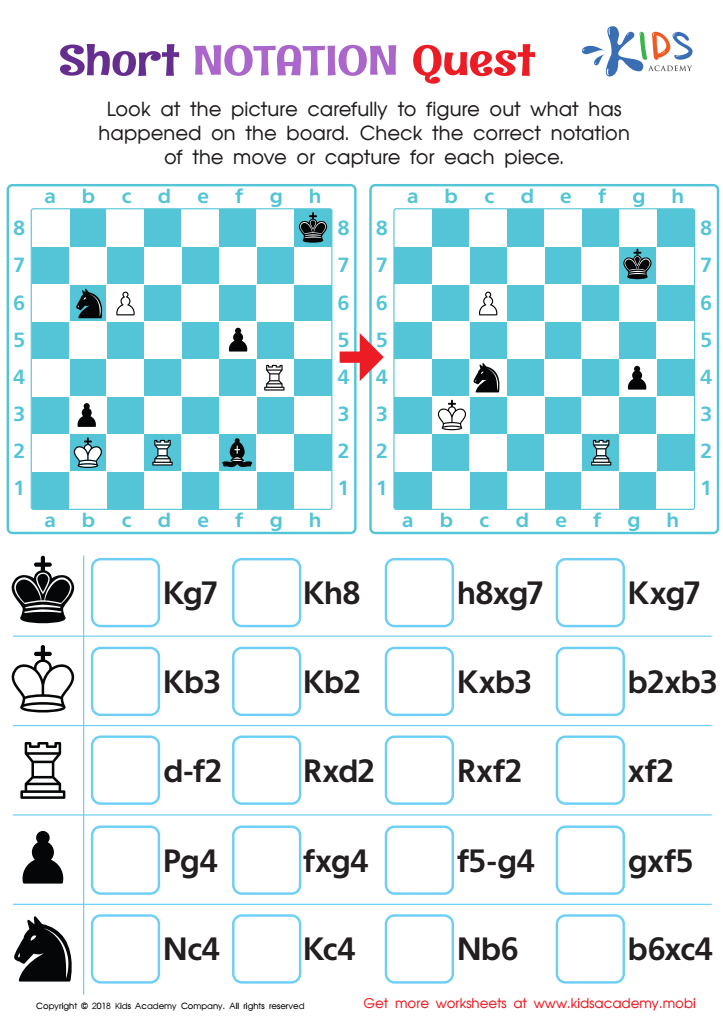

Short Notation Quest Worksheet
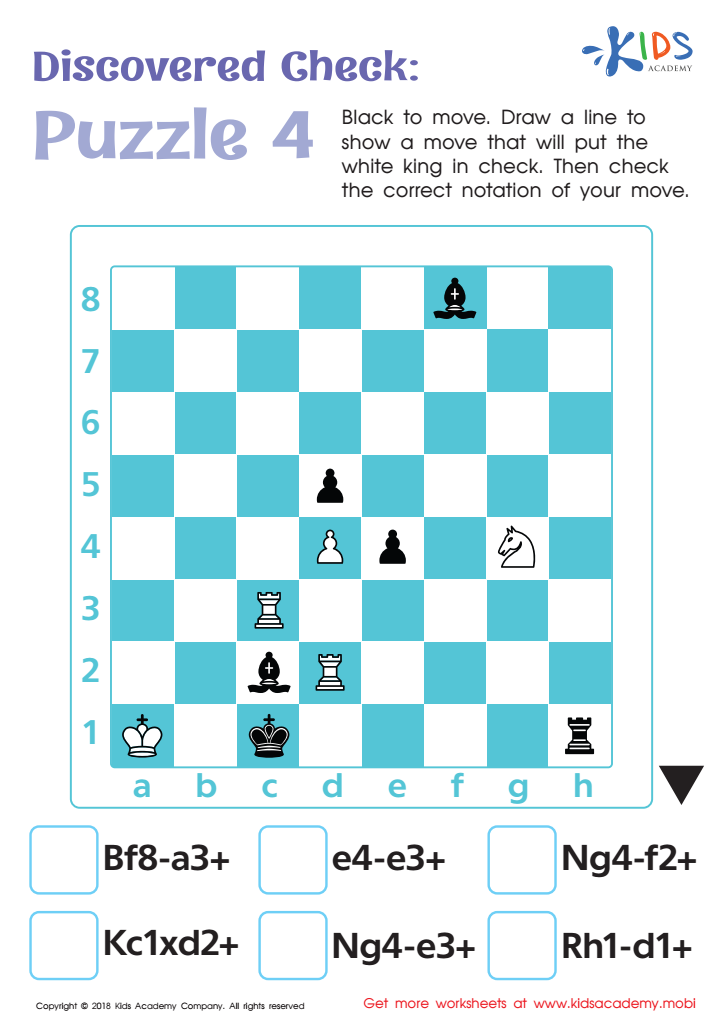

Discovered Check: Puzzle 4 Worksheet
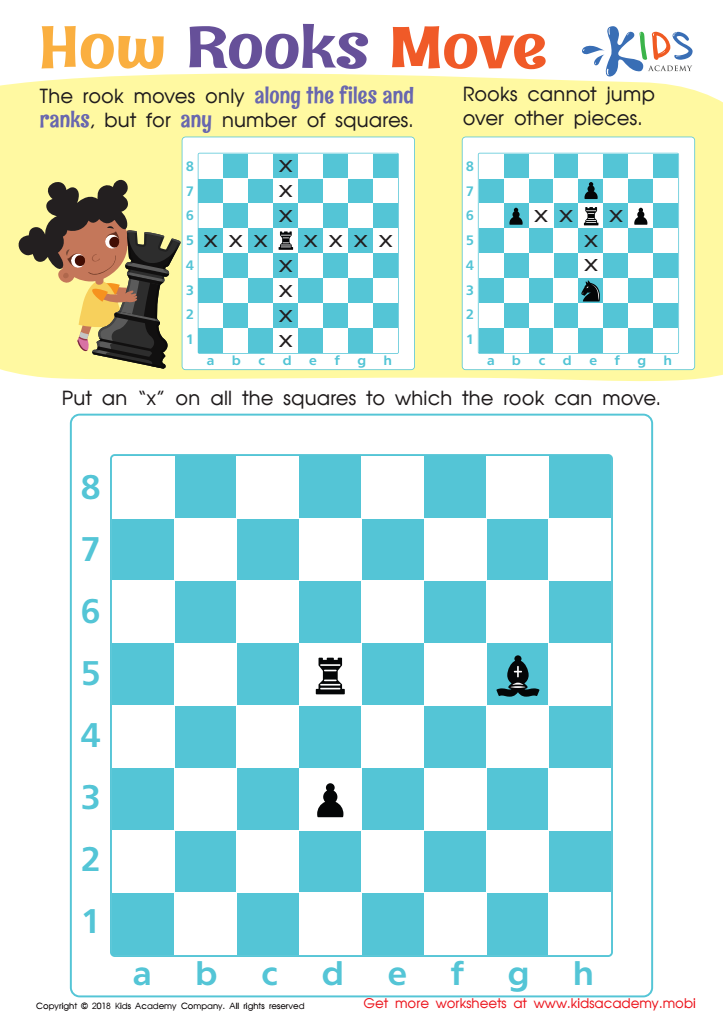

How Rooks Move Worksheet
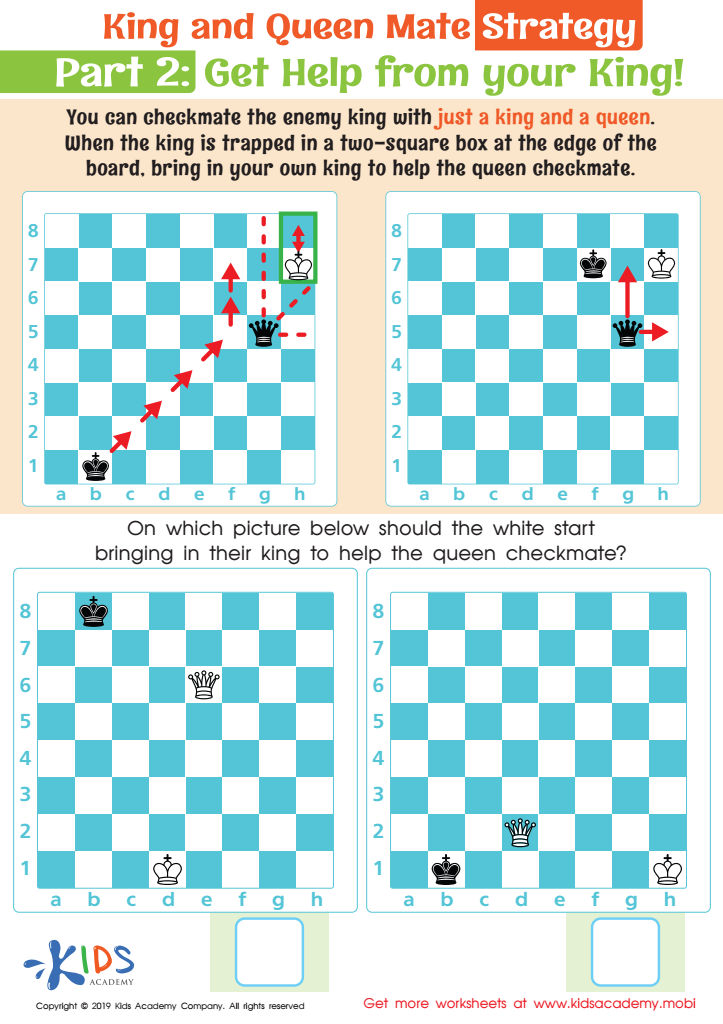

King and Queen Mate Strategy: Part 2 Worksheet
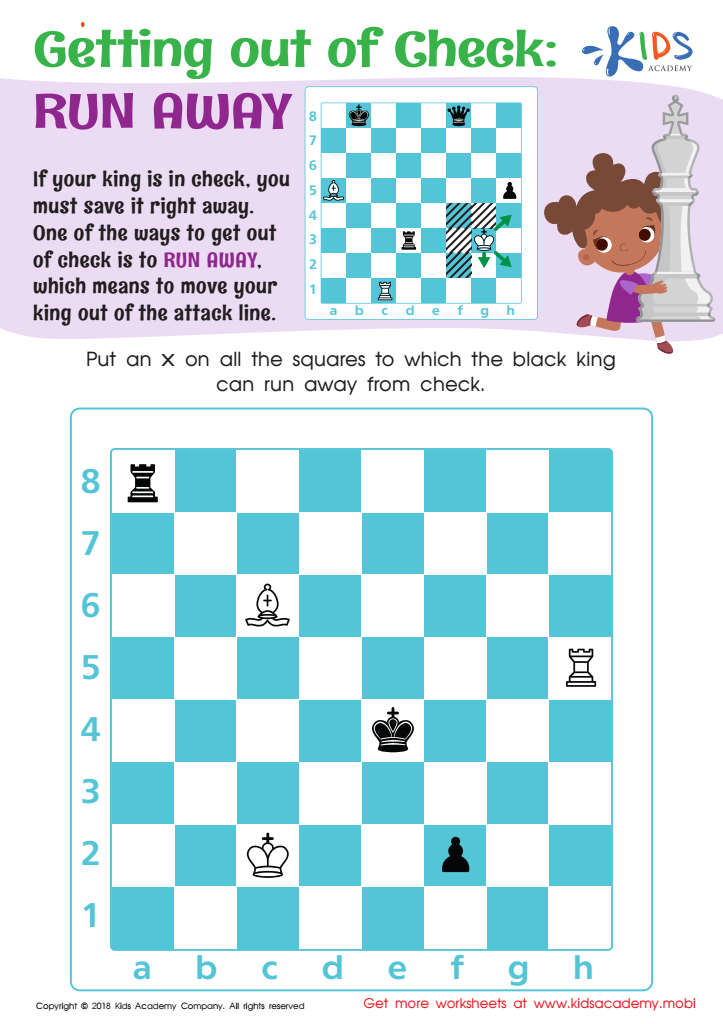

Getting out of Check: Run Away Worksheet
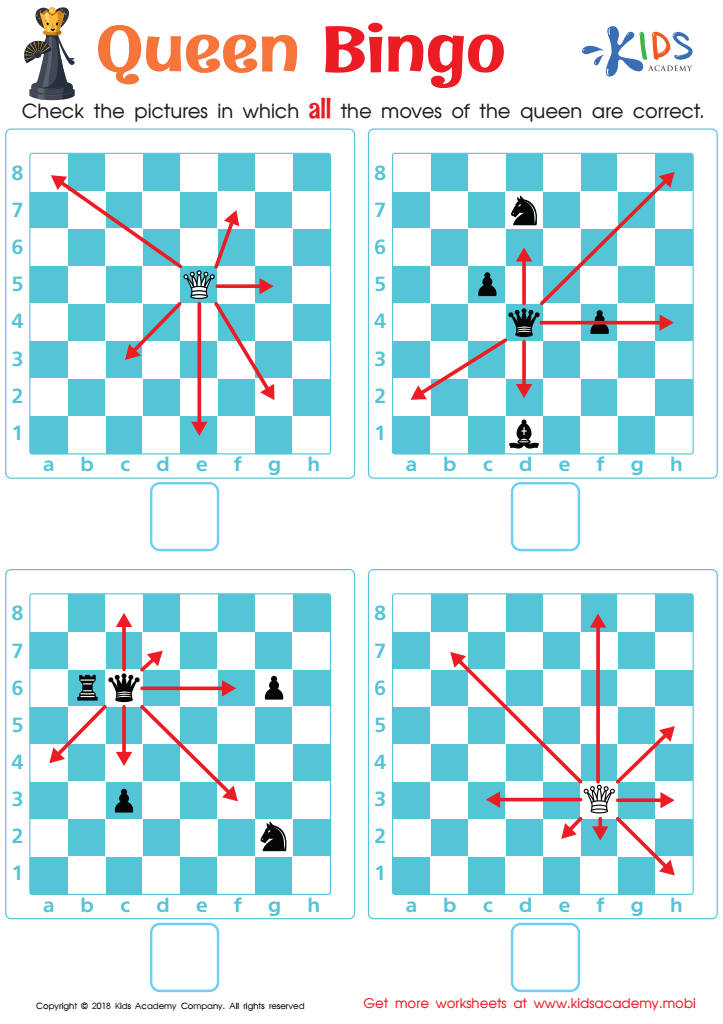

Queen Bingo Worksheet
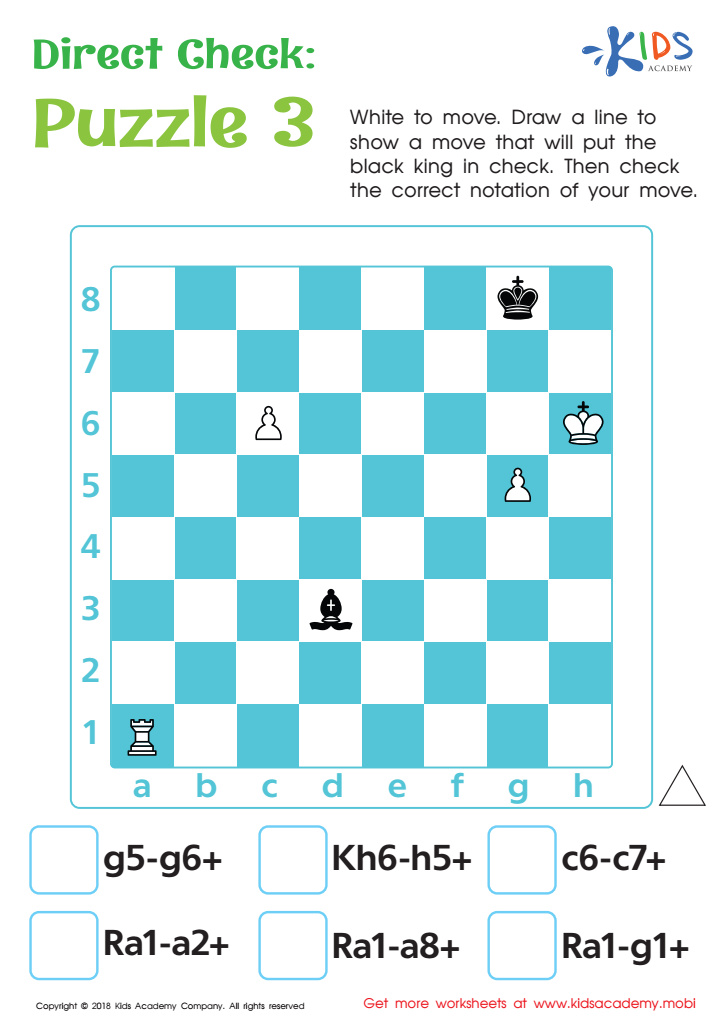

Direct Check: Puzzle 3 Worksheet
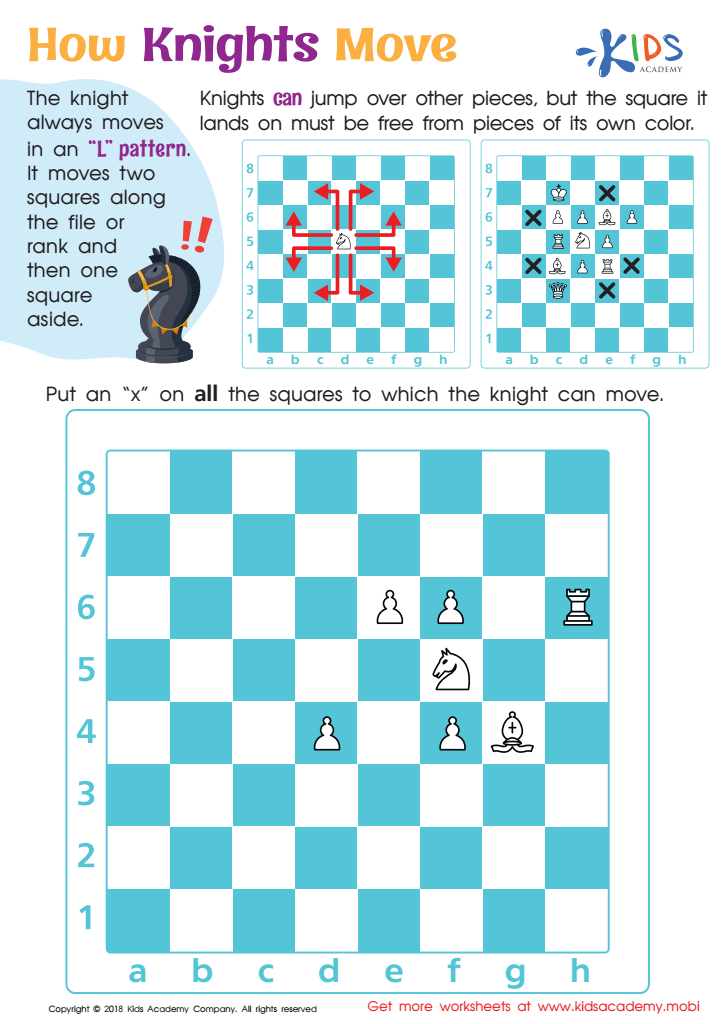

How Knights Move Worksheet


Bishops Bingo Worksheet
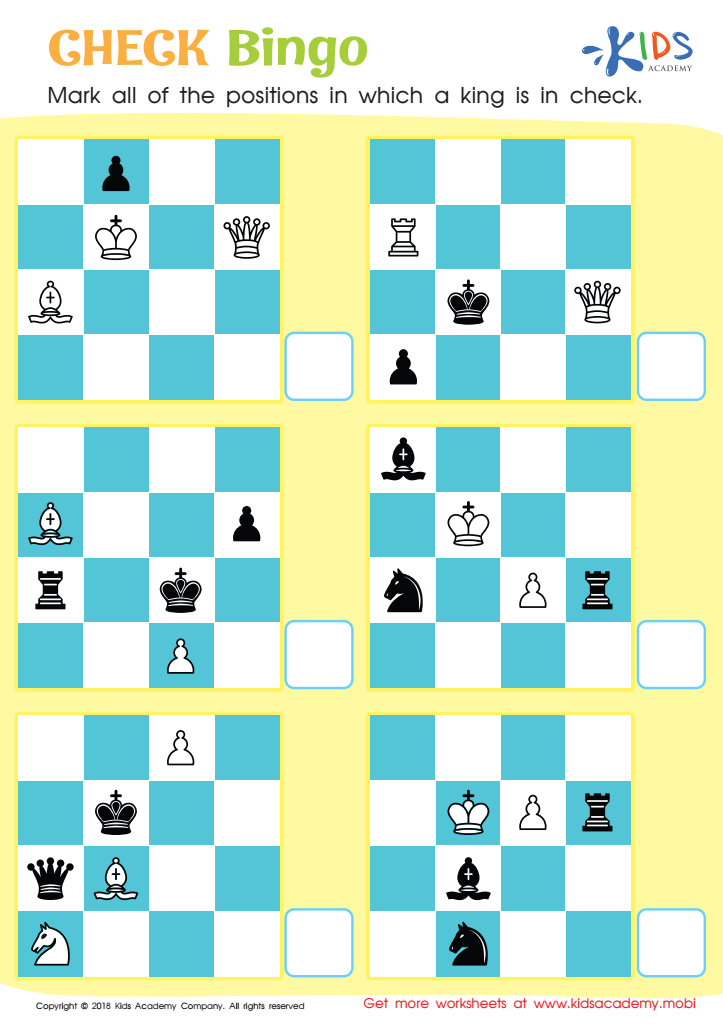

Check Bingo Worksheet
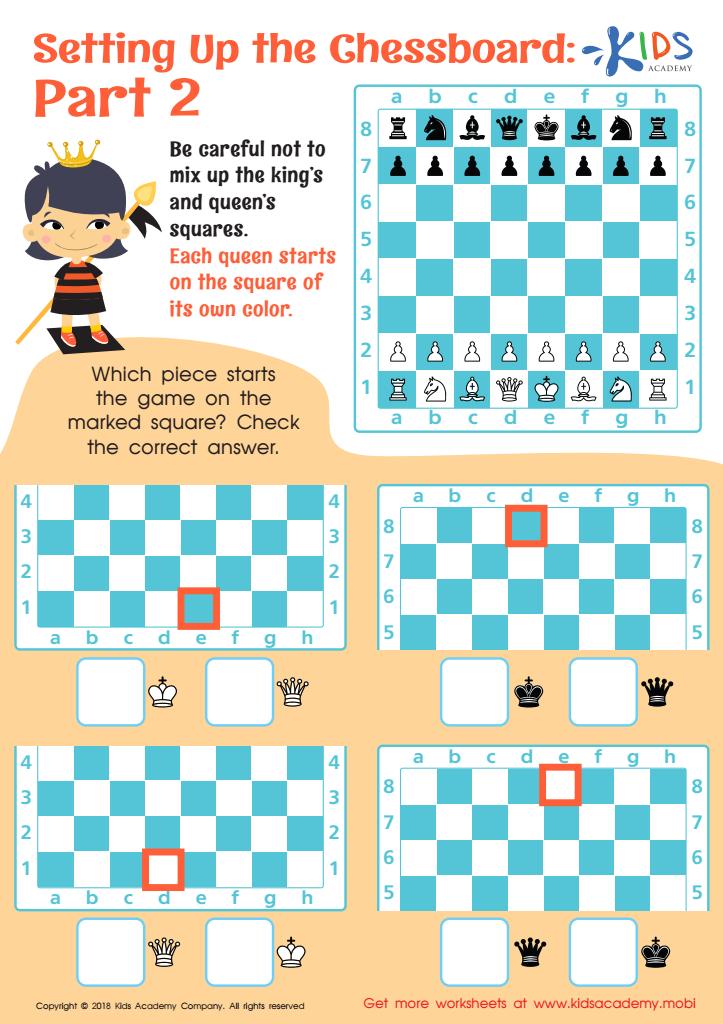

Setting up the Chessboard: Part 2 Worksheet
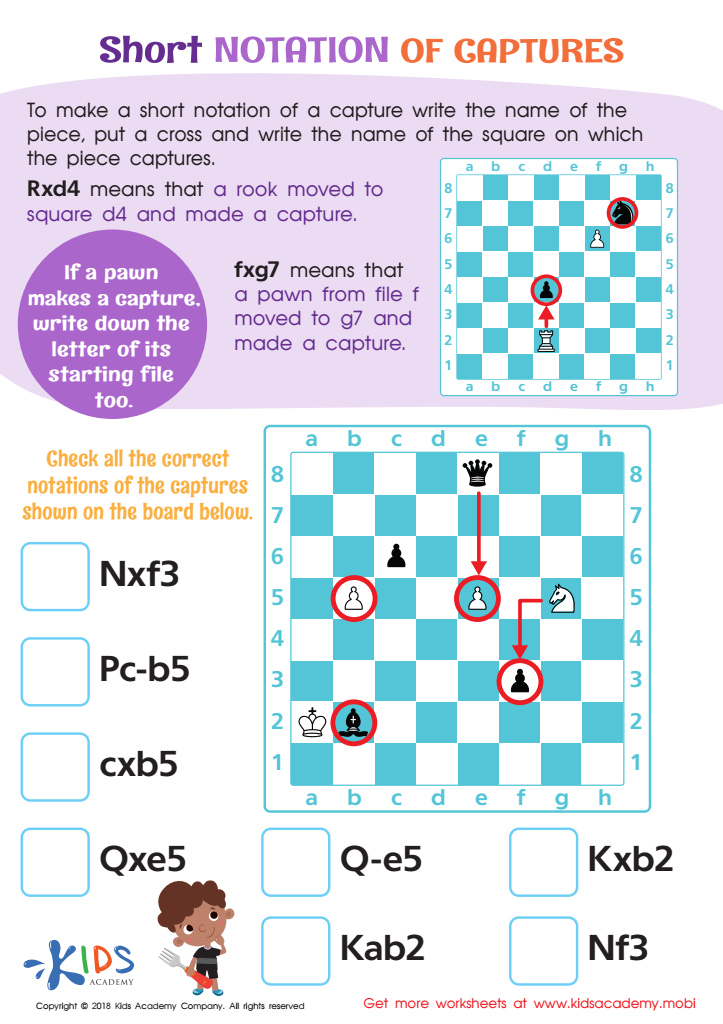

Short Notation of Captures Worksheet
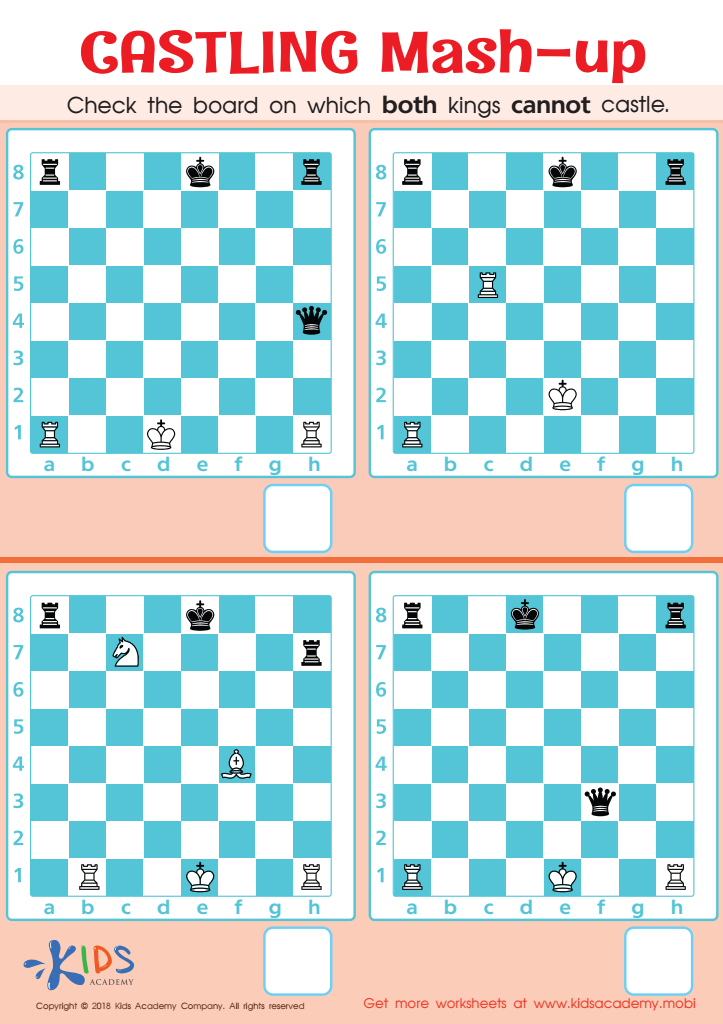

Castling Mash–up Worksheet
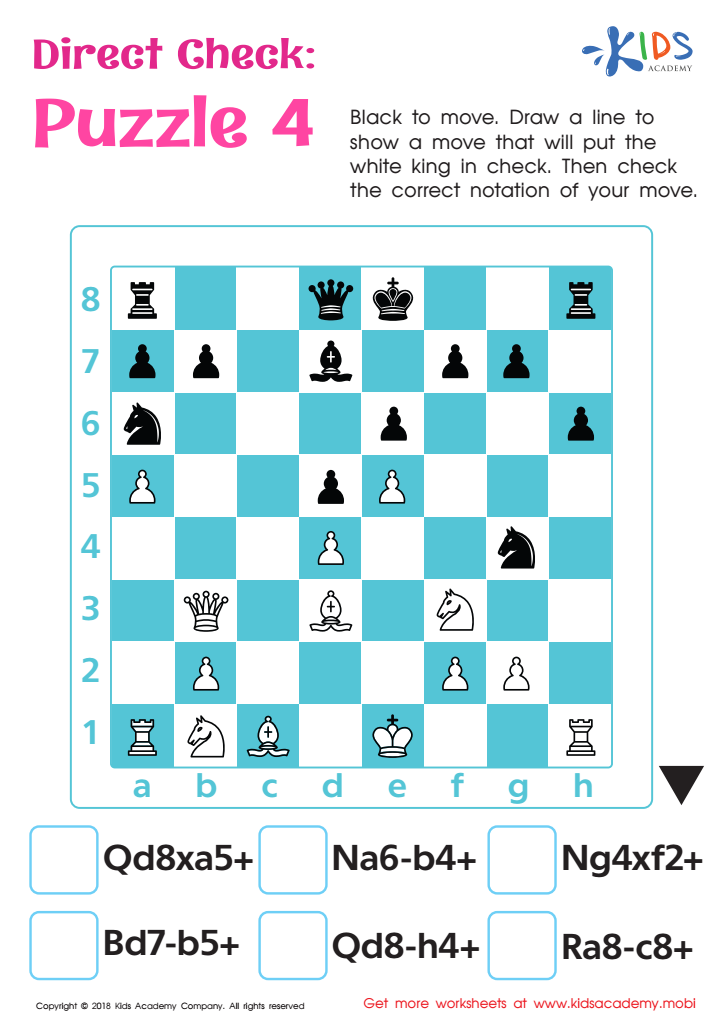

Direct Check: Puzzle 4 Worksheet
Chess, even for ages 3-7, is a valuable educational tool that fosters cognitive and emotional development in young children. Engaging in chess encourages critical thinking, as children learn to prioritize their actions and anticipate consequences. This strategic game develops their problem-solving skills, nurturing creativity and flexibility in thinking. Additionally, chess promotes patience and perseverance, teaching children to face challenges head-on and learn from their mistakes.
From a social perspective, chess fosters communication and teamwork among peers. Playing together can enhance a child’s ability to collaborate and share insights, allowing them to develop essential social skills. Furthermore, the game helps improve concentration and focus, important attributes in both academic settings and life in general.
For parents and teachers, incorporating chess into lessons or family activities can foster a lifelong love for learning. It provides a structured environment where children can engage in meaningful play while reaping developmental benefits. Lastly, introducing chess at a young age can create a foundation for future academic success, enhancing skills that can be applied across various subjects. Ultimately, encouraging chess in early childhood is an investment in a child's cognitive and social growth.

 Assign to My Students
Assign to My Students


